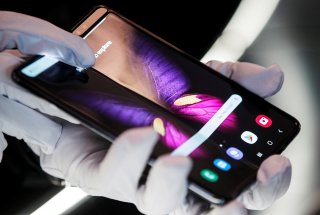4G vs. 5G: We Explain the Difference and Why You Need to Care
Latency – the time it takes for devices to communicate with each other or with the server that’s imparting information – was already pretty low with 4G, but 5G will basically make it disappear. This development is great news for new tech forays into remote real-time gaming and self-driving cars, as the communication needs to be instantaneous for hiccup-free gameplay and to guarantee the safety of passengers.
Although there has been much media coverage regarding 5G’s health-related dangers and conspiracy-driven connection to the coronavirus, many people are still in the dark about what the 5G network can bring to the everyday internet user.
To put it simply, there are three main differences between 4G and 5G: faster speeds, higher bandwidth and lower latency.
Several major U.S. cities already have this next-gen network, but the areas that receive signals that surpass gigabit-level speeds (can approach 15 or 20 Gbps) are still limited. Because many revolutionary innovations will be built on top of 5G, many developed countries are indeed competing to be the first to roll out a fully functional nationwide network.
Speed is obviously one of the most highly anticipated perks of this next-gen network, as it is expected to be about 100 times faster than its 4G counterpart. With such blazing speeds, you can expect to download a two-hour movie in less than 10 seconds (takes about 7 minutes on 4G). This has to be sweet music to the ears of consumers who dedicate their evening routines to streaming TV shows and movies.
These rapid speeds are only possible because most 5G networks are constructed on super-high-frequency airwaves, which are also known as high-band spectrum. Compared to 4G, these higher frequencies are able to transmit more data at higher speeds. The shortcomings, however, are that high-band spectrum isn’t designed to travel far and has a difficult time going through hard objects like walls.
Internet experts have compared the 5G network to a wide-open freeway with extra lanes for vehicles to drive on. With this in mind, 5G will look to do away with the frustrations that people often feel at packed sporting venues and concert halls, where there are many devices trying to use the network at once, leading to slow data speeds.
The 4G-network infrastructure often couldn’t handle such situations, but 5G is expected to boast significantly higher capacity – enabling stronger internet connections for thousands of phones simultaneously. This advancement will also provide the necessary bandwidth to handle all of the devices that are part of Internet of Things.
Latency – the time it takes for devices to communicate with each other or with the server that’s imparting information – was already pretty low with 4G, but 5G will basically make it disappear. This development is great news for new tech forays into remote real-time gaming and self-driving cars, as the communication needs to be instantaneous for hiccup-free gameplay and to guarantee the safety of passengers.
Ethen Kim Lieser is a Tech Editor who has held posts at Google, The Korea Herald, Lincoln Journal Star, AsianWeek and Arirang TV. He currently resides in Minneapolis.

